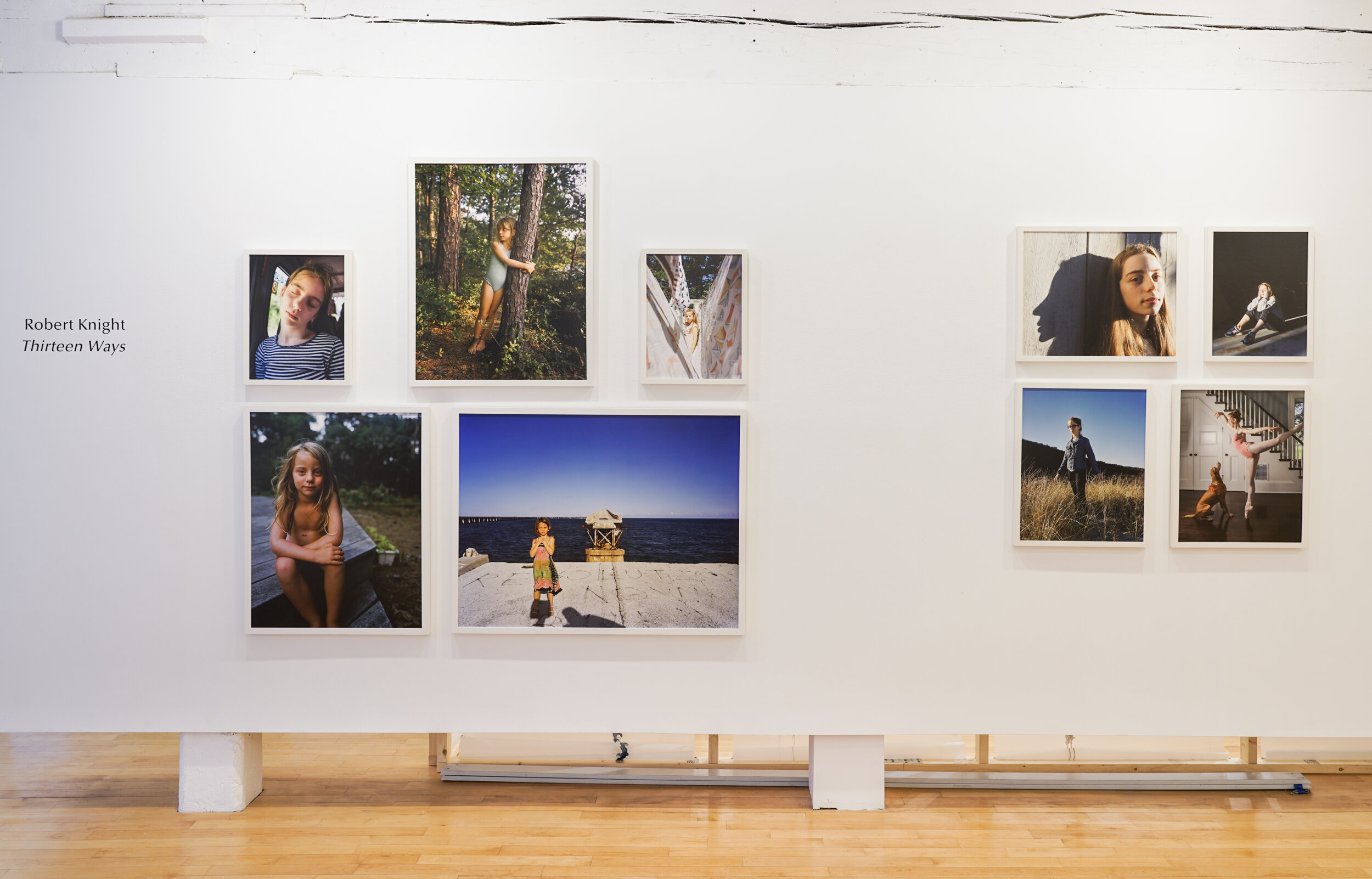
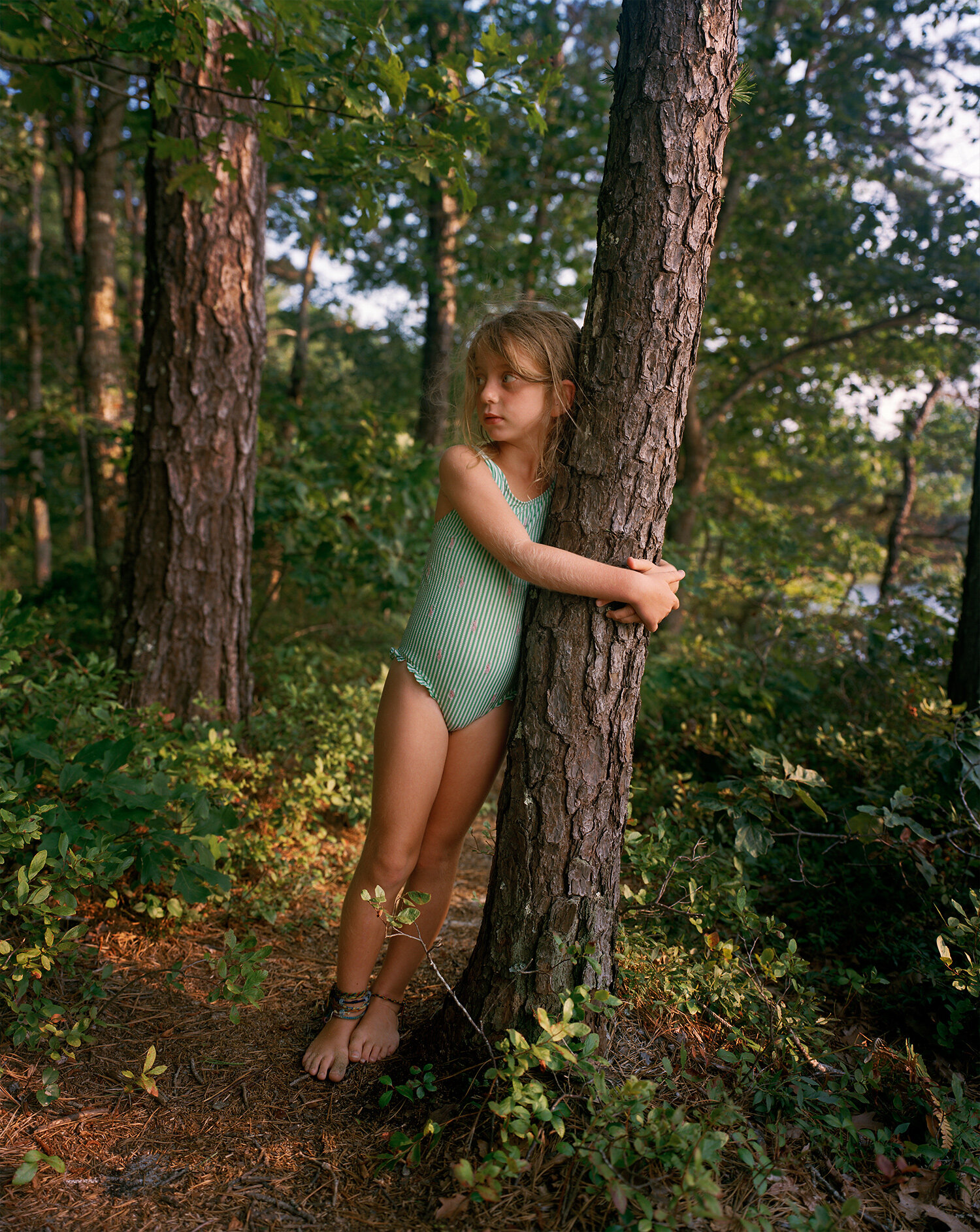
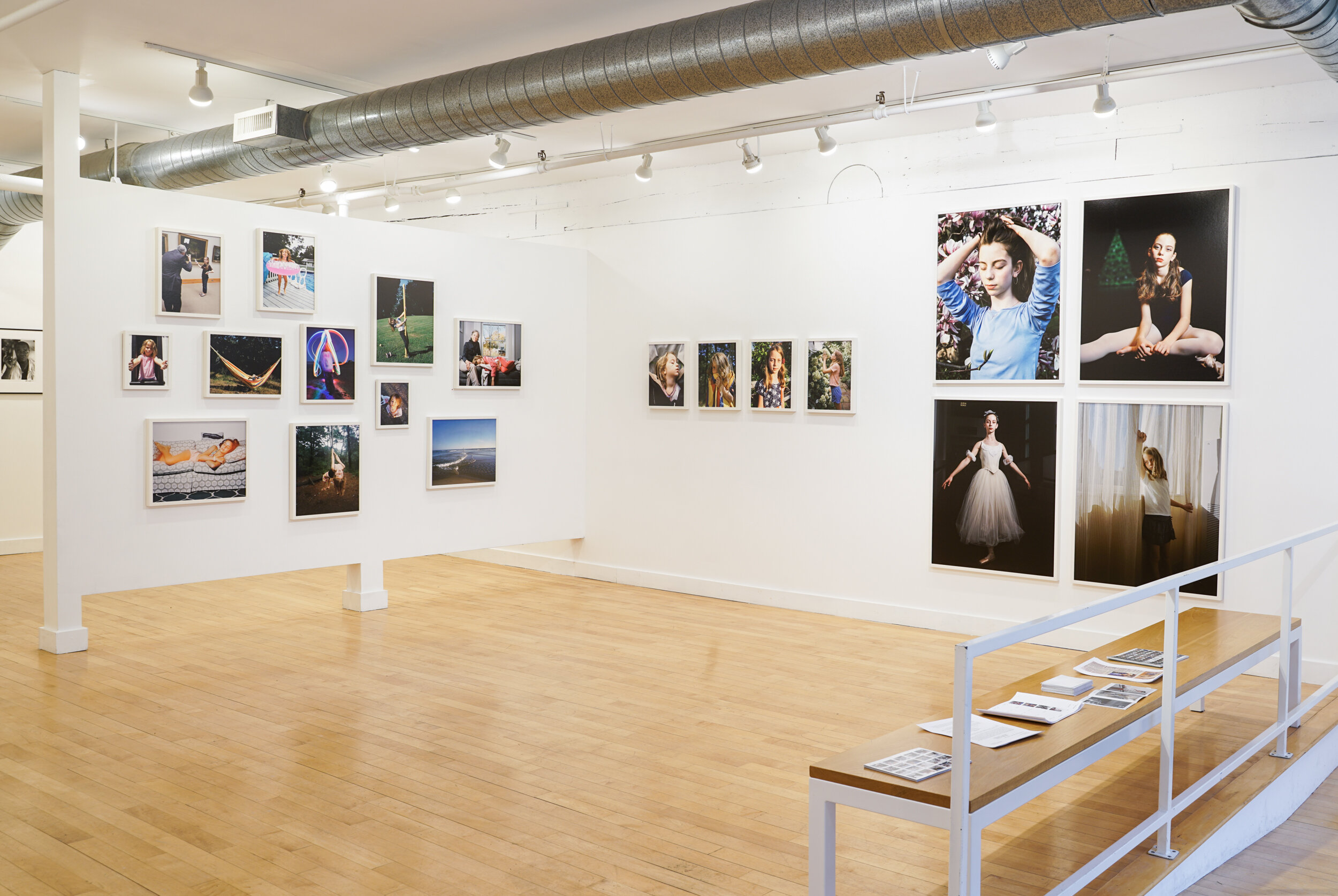
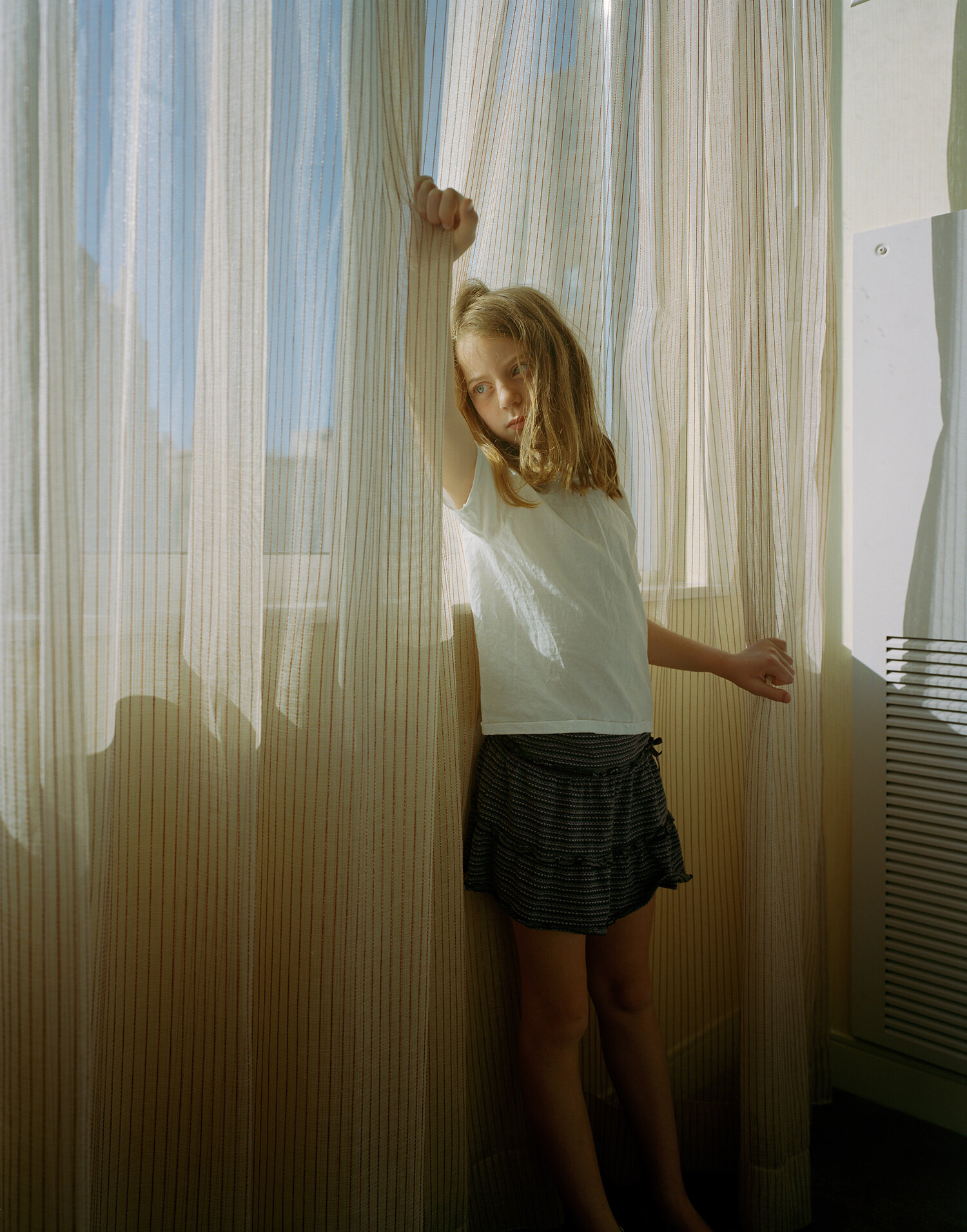
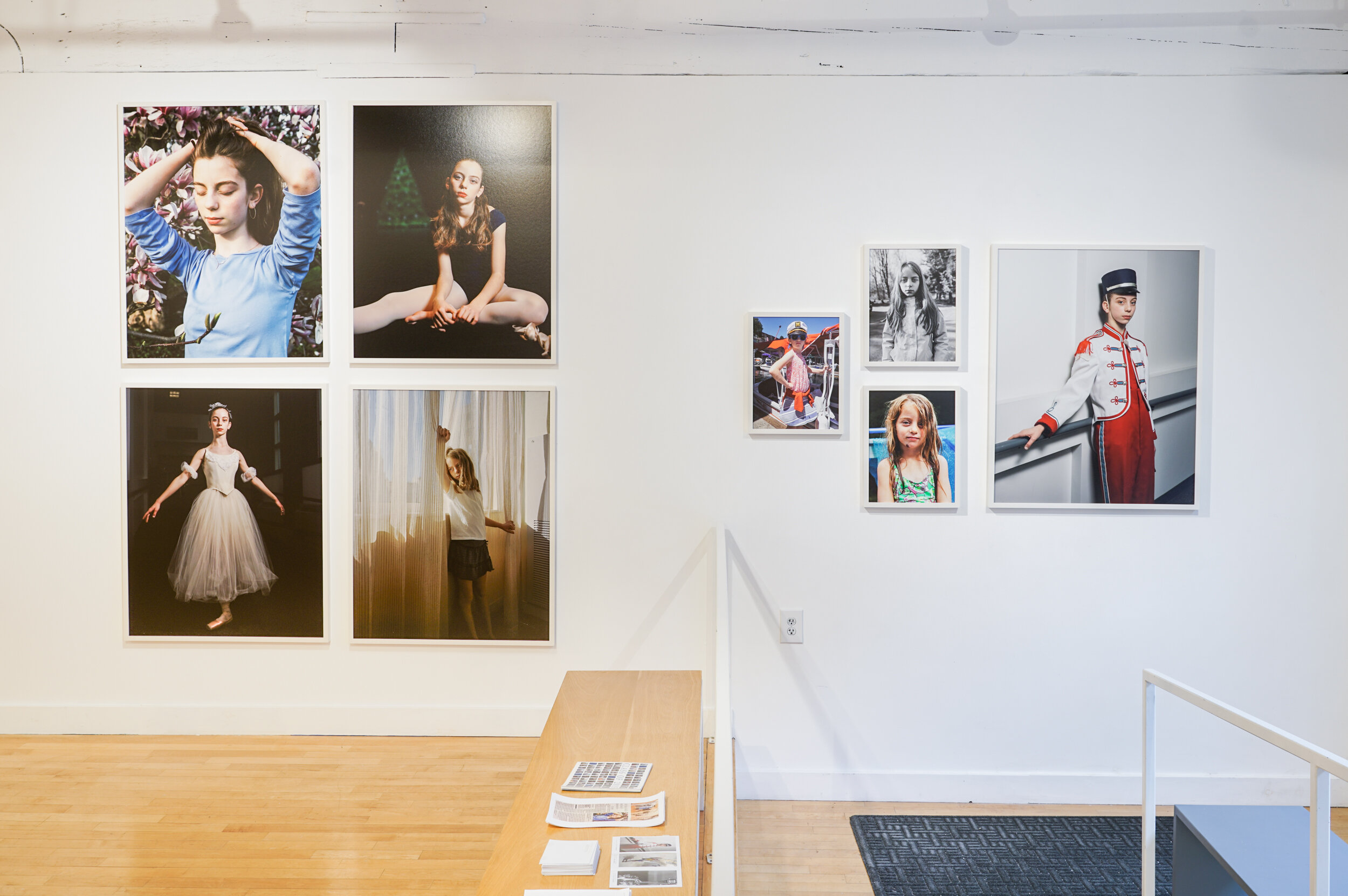
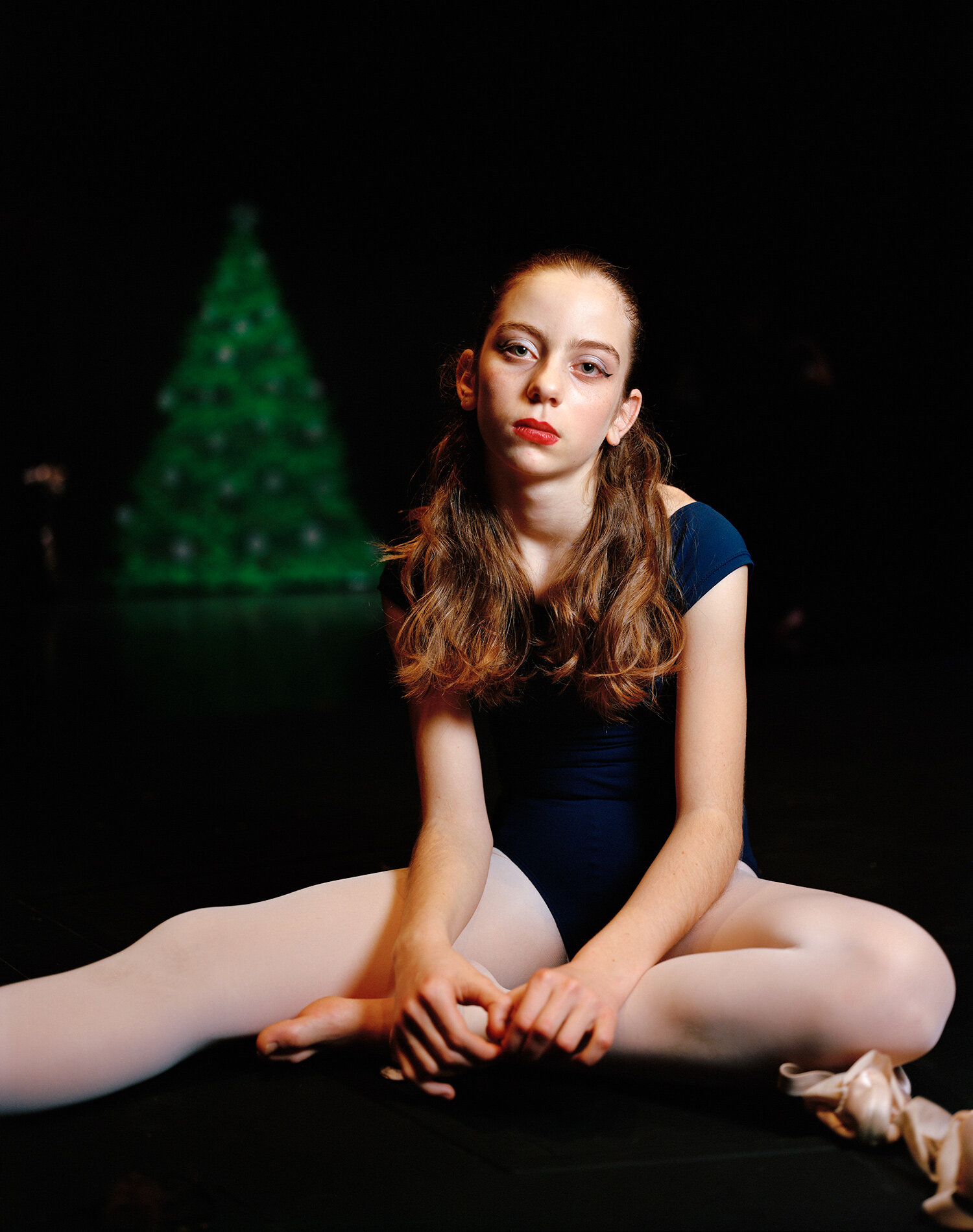
Robert Knight
Thirteen Ways
Robert Knight’s Thirteen Ways, is comprised of 32 color photographs, all portraits of his daughter, Eden, beginning with her birth in 2006 until the present. Knight’s projects are often autobiographical and reference the time and place of the moment. In 2008, the gallery exhibited Knight’s project, My Boat is so Small. These images of domestic interiors were specifically children’s rooms and the places in which they played. Looking at the space, we were asked to consider what has the child selected for their room, and what the parents added, often an indication of their expectations. As the Knight children grew, so did the changes of balance in the family. The next series, Sleepless, was a time-lapse study during sleeping hours exploring the light and sounds of which we are unaware as we sleep. The time lapse imaged the movement of the child throughout the night set in the stage of the immobile bed and room.
It is now 2021 and Eden is fifteen. The images in Thirteen Ways are personal and intimate, revealing the relationship between a father and his daughter and their bond that grows and changes as child becomes an adult.
Inspired by the Wallace Stevens poem, Thirteen Ways is a collection of photographs of my daughter since she was born in 2006. The project is at once both a reflection of a father’s nearly blind obsession with his child and a representation of the multiplicity of personalities that a young woman coming of age can choose to embody. -Robert Knight, 2021
Thirteen Ways
“I do not know which to prefer,
The beauty of inflections
Or the beauty of innuendoes,
The blackbird whistling
Or just after.”
-Wallace Stevens, from Thirteen Ways of Looking at a Blackbird
In addition to inkjet prints, the project includes non-traditional photographic prints, including intaglio prints and cyanotypes. Images were taken with an antique 4x5” view camera, medium format film cameras and various digital cameras. -Robert Knight, 2021
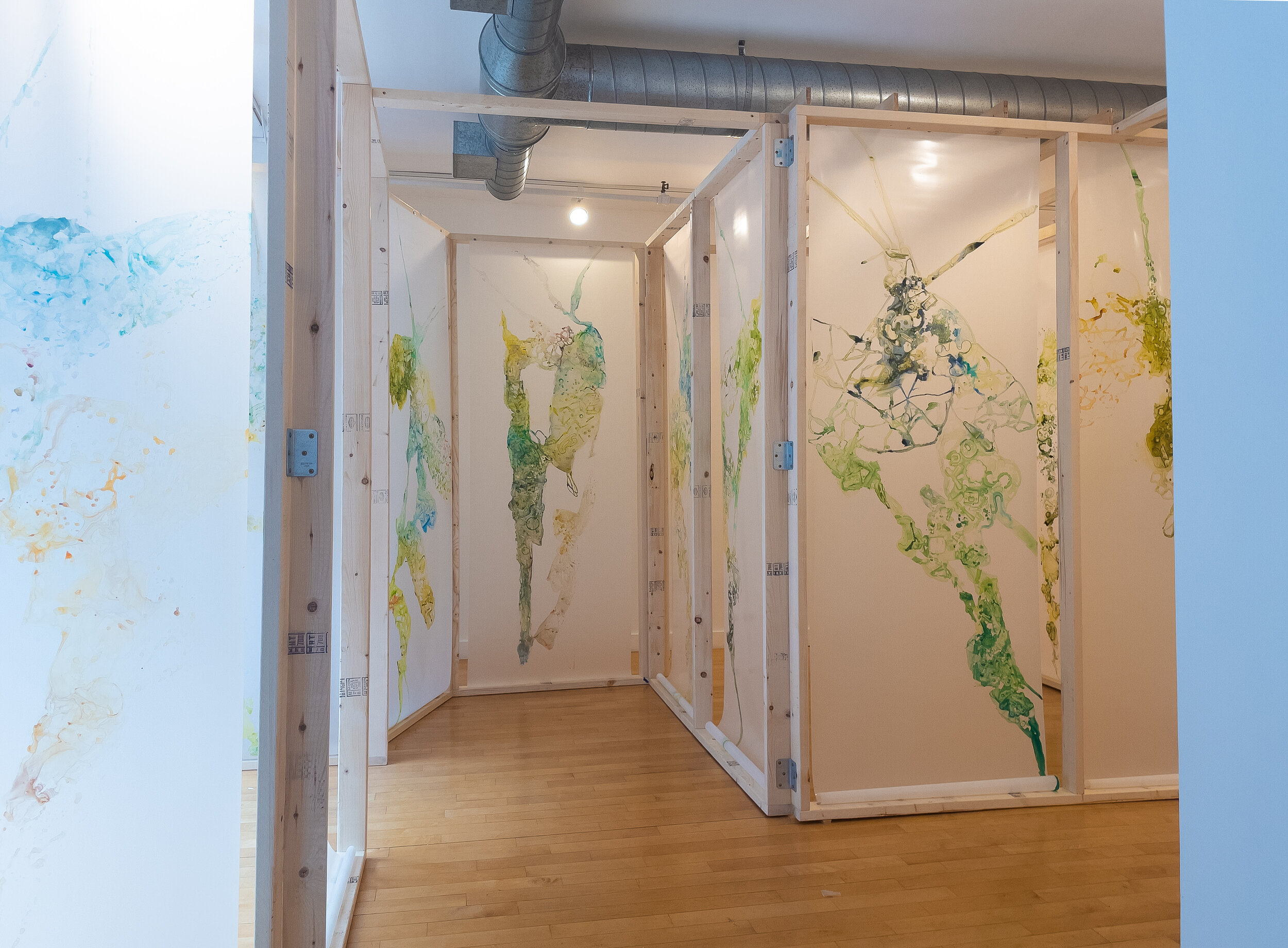

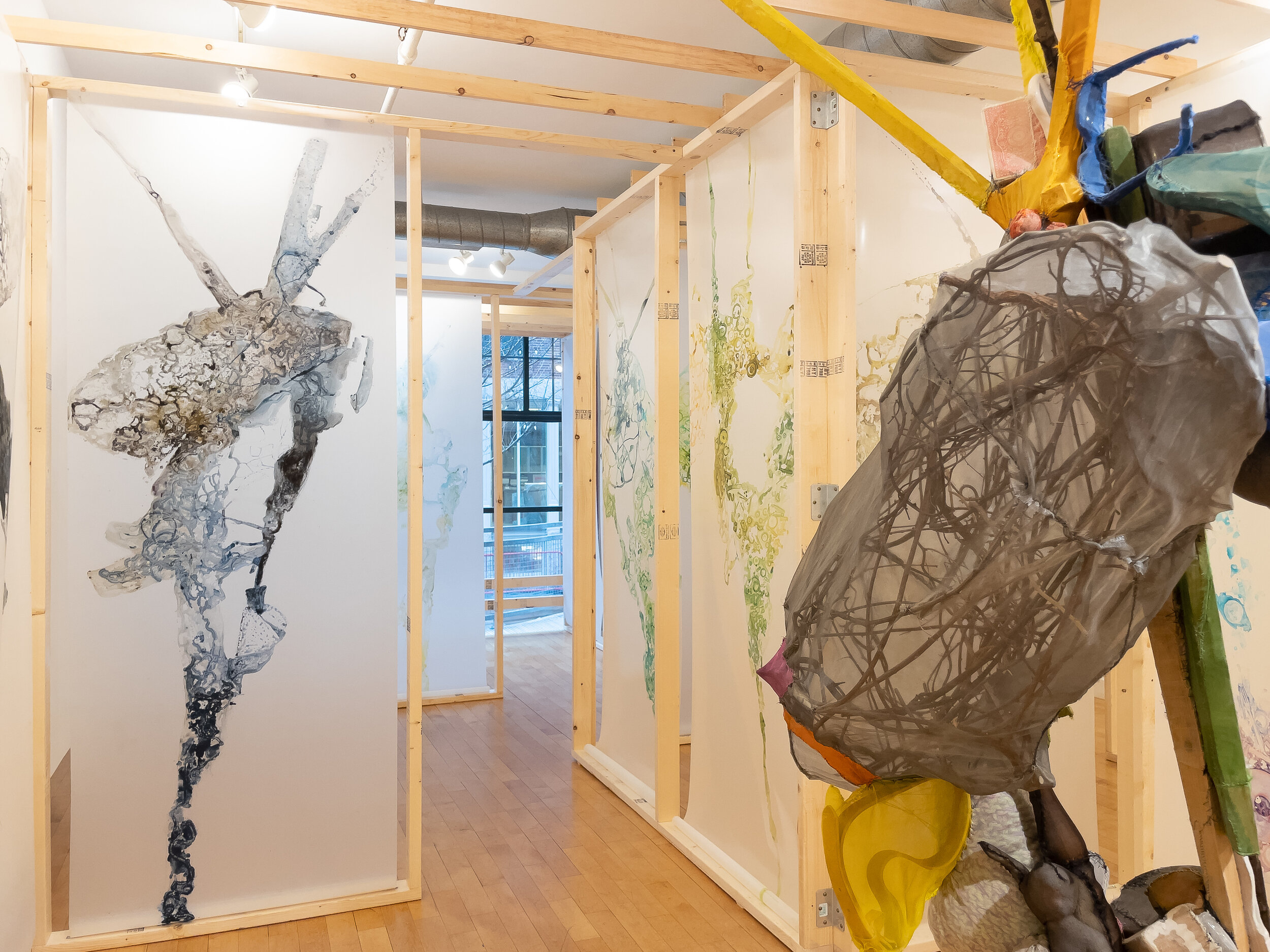
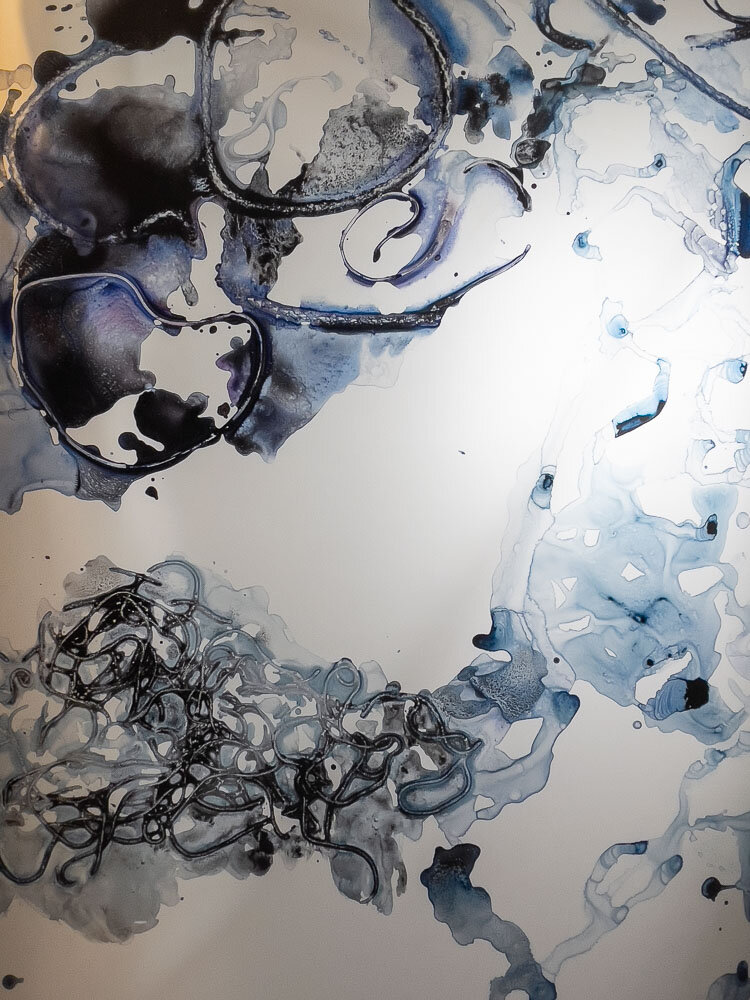
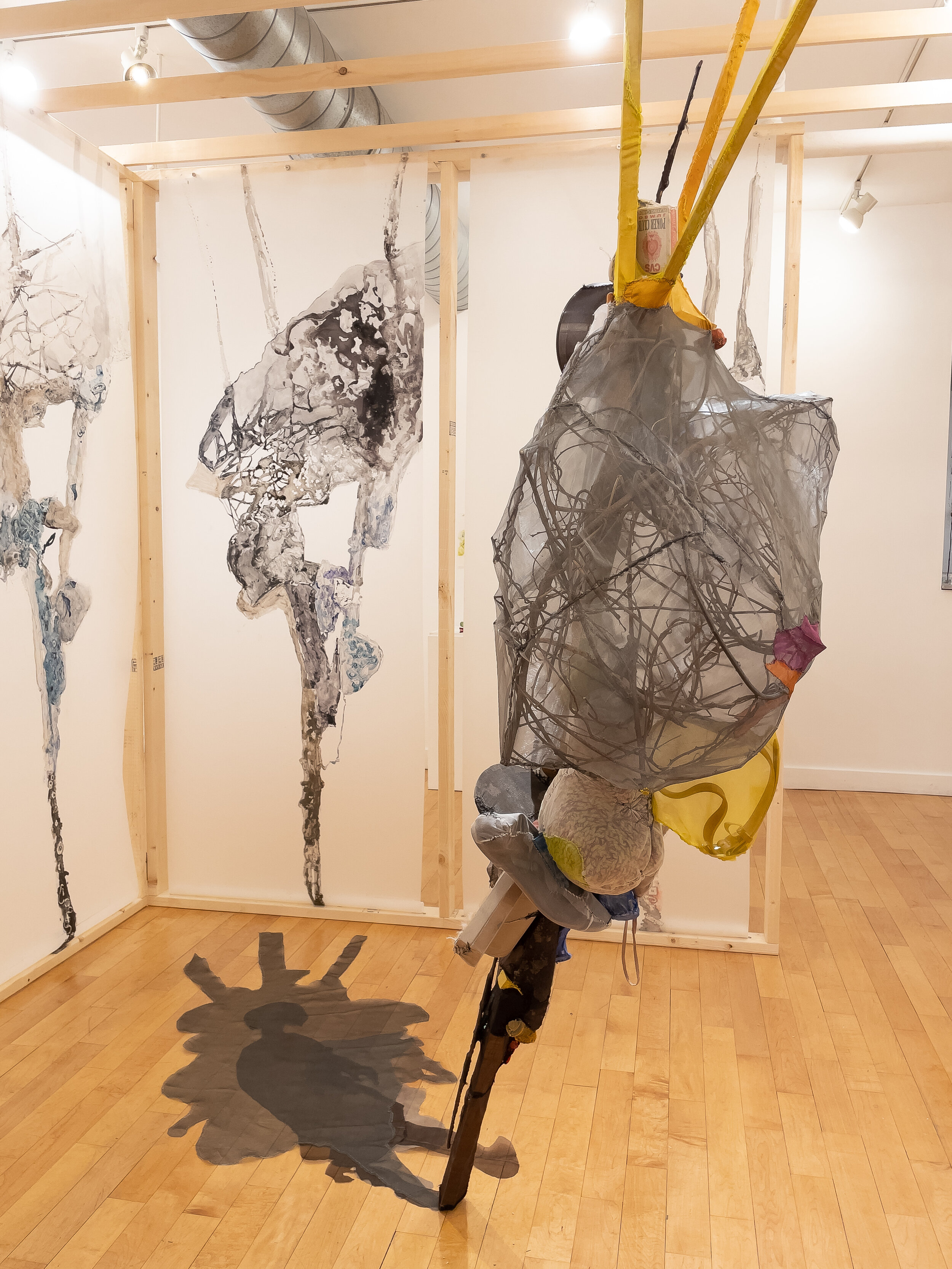
Audrey Goldstein
Shadowtime
Shadowtime: A parallel timescape that follows one around throughout the day-to-day experience of regular time. Shadowtime manifests as a feeling of living in two distinctly different temporal scales simultaneously, or acute consciousness of the possibility that the near future will be drastically different than the present. -The Bureau of Linguistical Reality
Shadowtime, Audrey Goldstein’s current installation at Gallery Kayafas, is a house made of time, both the residue of passing time and the haunting of lost time. Made with discarded objects from an uninhabited home, Shadowtime is an embodied whisper of time, an attempt to contain our stories of loss and beauty within the ghostly walls of a home. The rooms of Shadowtime are divided into timescapes that reflect periods of daylight and night. The pigmentation of each hour’s panel is a record of observed light from when it was made.
Enter the house between the eleven pm to midnight doorway and you find the Walking Stick sculpture, used as a sundial to generate the wall shadows. These wall panels both represent time (their observed light) and are made of time (their evaporation patterns). A walk through the rooms takes you through an entire day. Approach the panel of a single hour and you see the imprint of flotsam and jetsam scattered by a lifetime spent. The shadow-sediment is what remains from the Walking Stick’s cast shadow.
The Walking Stick was formed by gathering and stitching but is held together by thread alone and is a conglomerate of leftovers. It is a record of time that is both noticed and unnoticed, spent and forgotten. The objects used are not seen individually but as building blocks. Their silk cocoons contain, isolate and preserve their memory-forms. The objects are held in stasis but serve to construct the whole. Each item’s original value is replaced by its structural purpose. The Walking Stick’s shadow contains a remnant of the home’s owner.
Shadowtime is a building made to highlight our felt experience, our physical selves beyond the screen. It is a building made to wander through, to move through its rooms of time and begin to reset our pandemic isolation as you would reset a clock. Wanderers are invited to carry a small handheld; 5 objects of contact piece that can help ground them through touch. These small handhelds are made as haikus- a small gathering that expands understanding. Through touch, through contact forbidden us now, these small moments can help bring us connection. -Audrey Goldstein, 2021
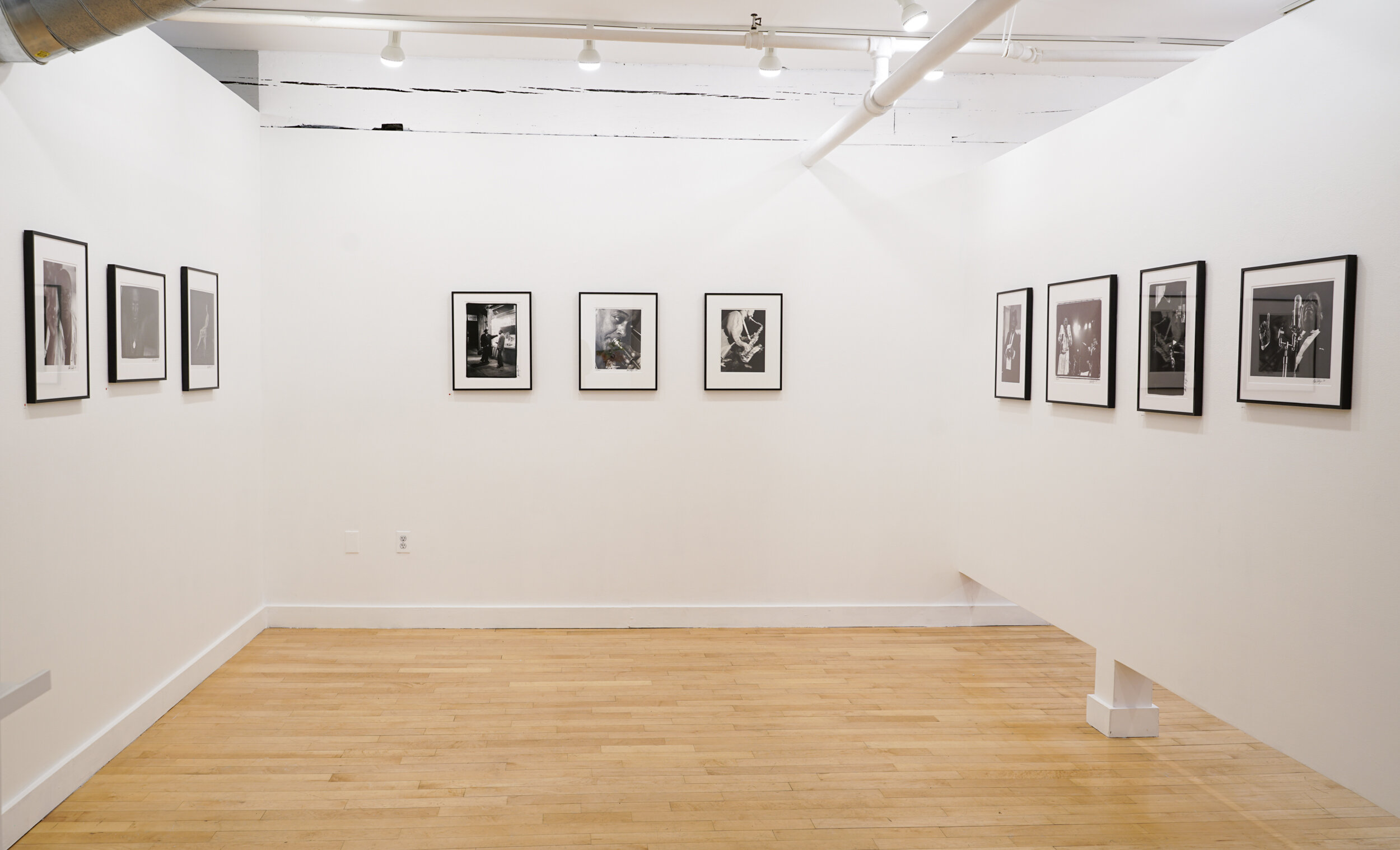
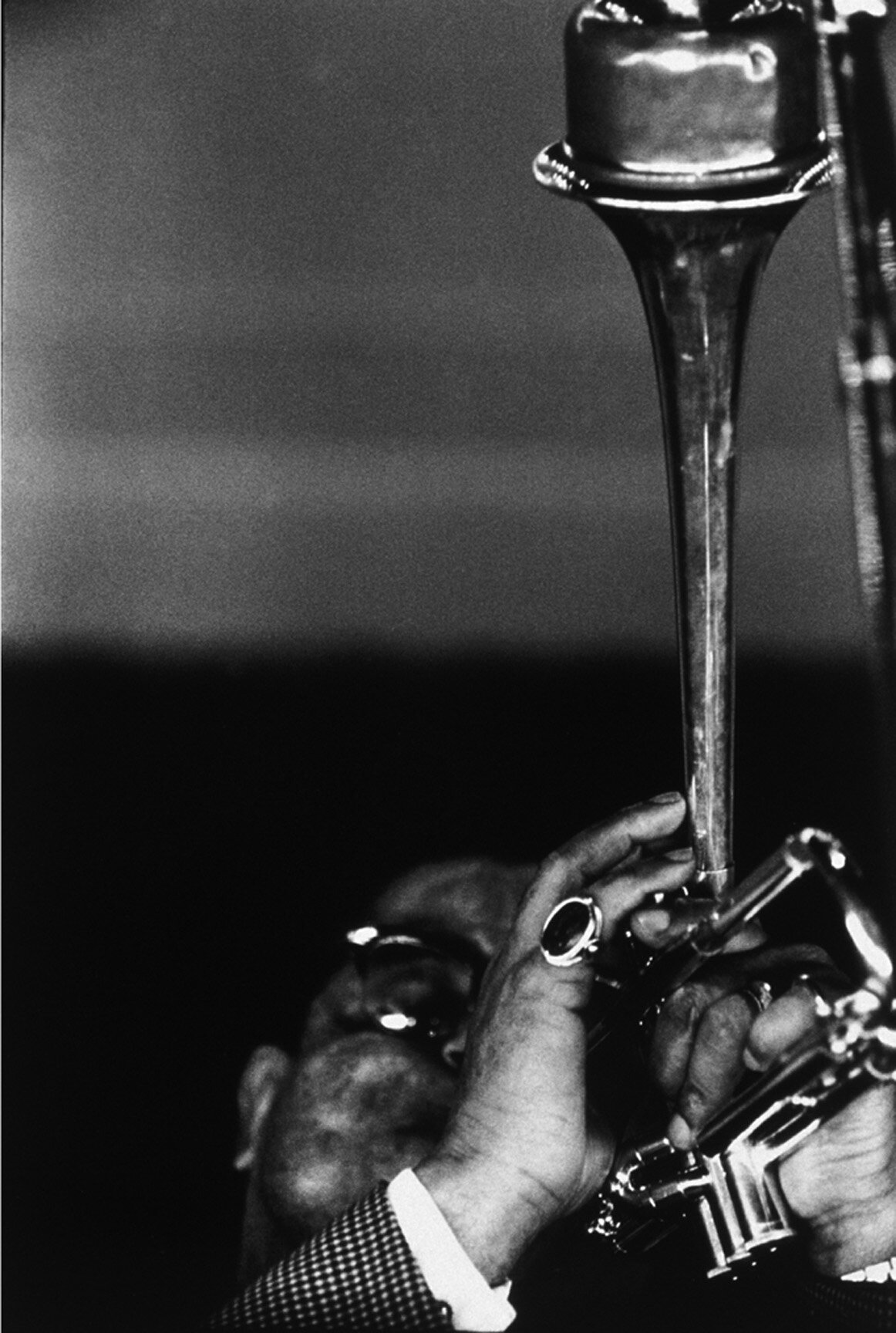
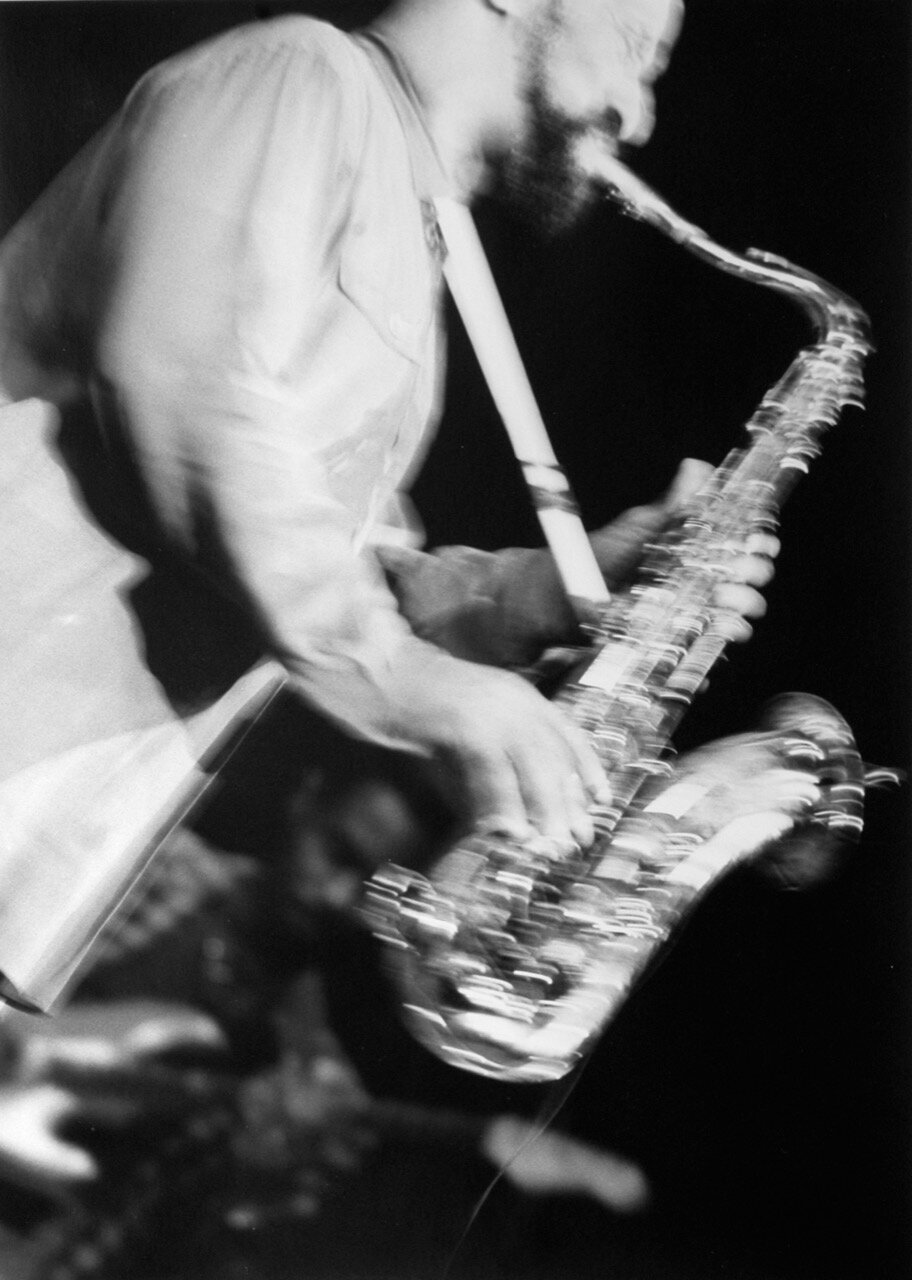
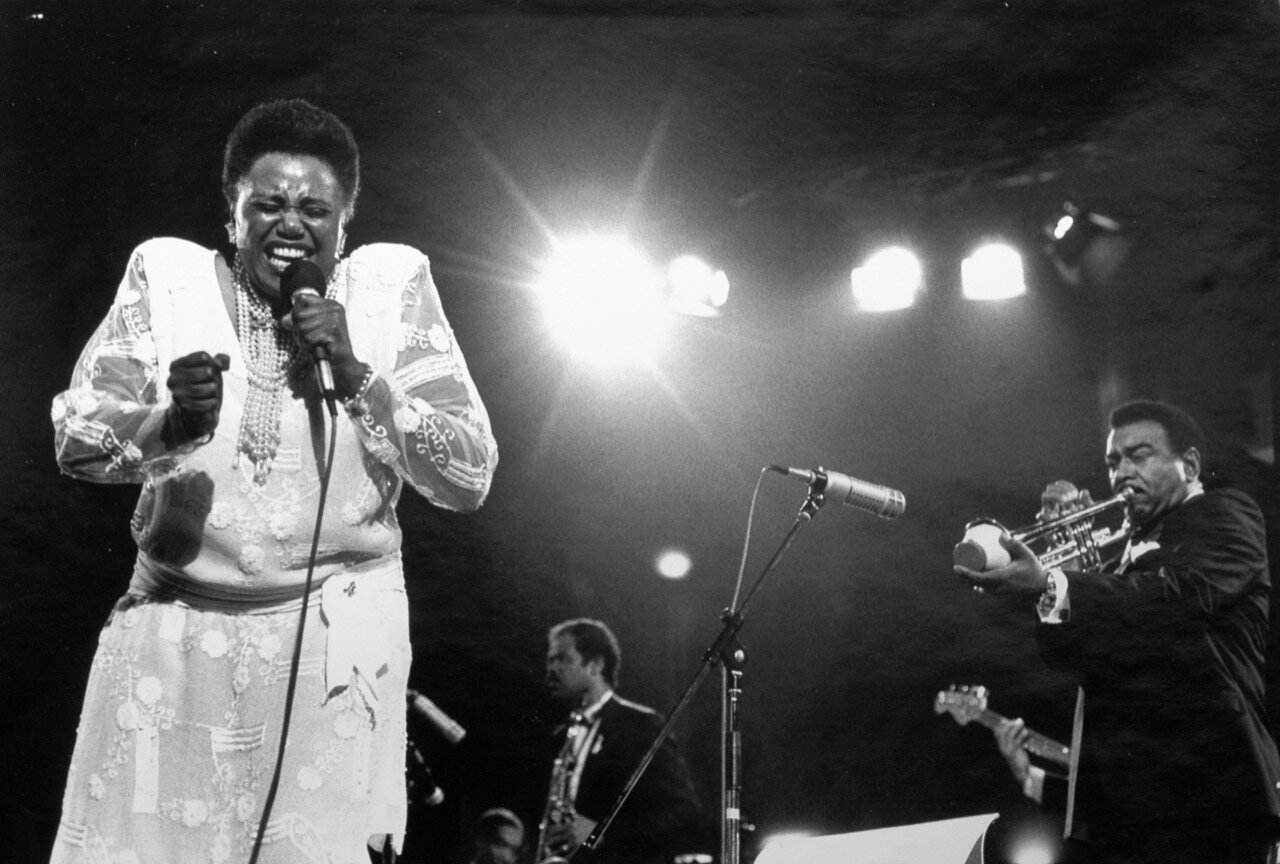
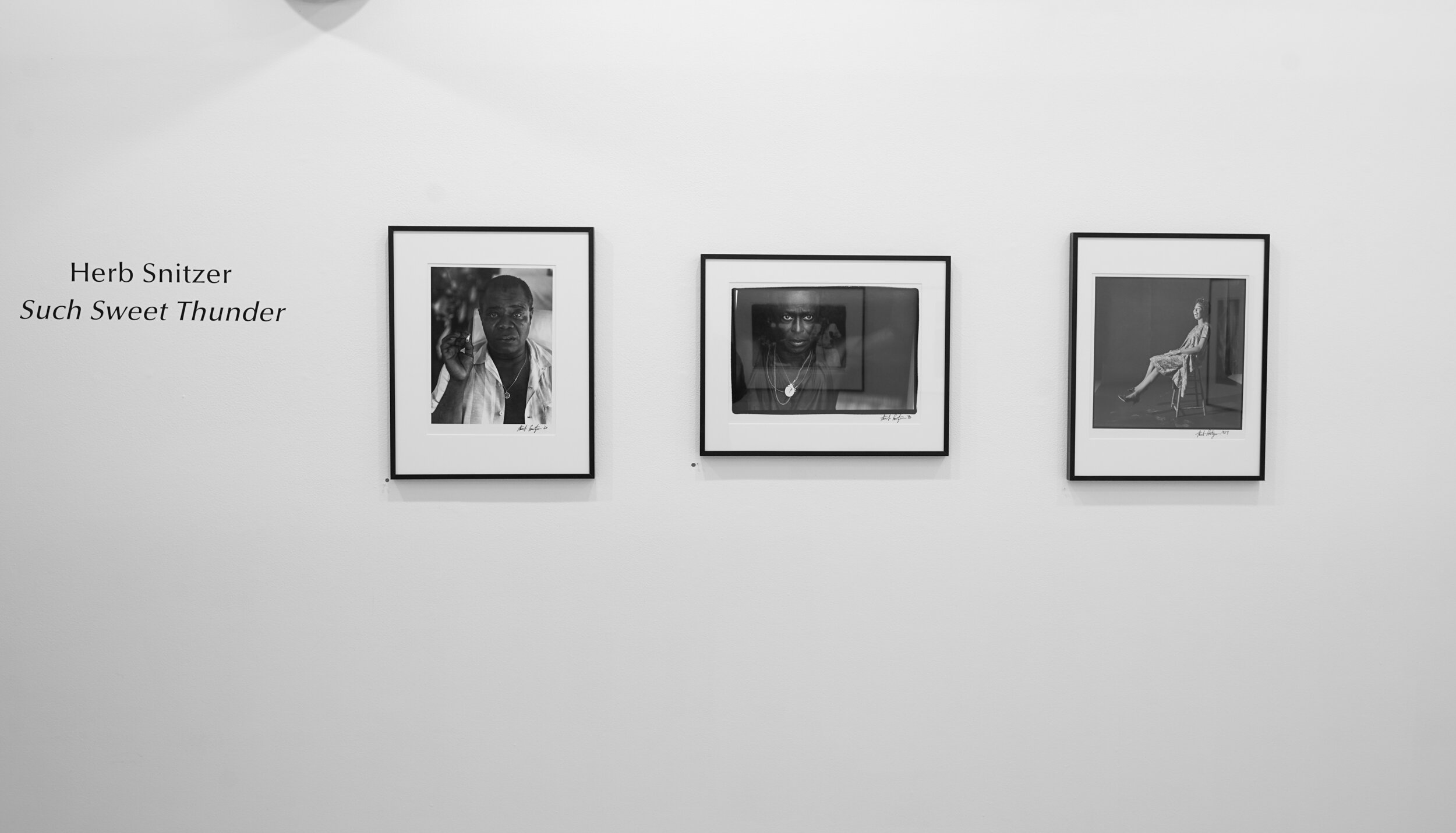
Herb Snitzer
Such Sweet Thunder
Herb Snitzer, Such Sweet Thunder is a collection of just a few of the hundreds of iconic images he made of great jazz musicians. Snitzer’s career covers more than sixty years of image-making, beginning in 1957. He worked for Life, Look, The Saturday Evening Post, Fortune, Time and other national magazines as well as for the New York Times and Herald Tribune. He became Photography and Associate Editor of the leading American jazz magazine, Metronome, which enabled him to meet and photograph many of the great jazz musicians: Miles Davis, Nina Simone, Duke Ellington, John Coltrane, Sonny Rollins, Louis Armstrong, Ella Fitzgerald, and more.
Snitzer’s images, capture the energy of the stage, the rapture of the performance and the grittiness of the time. Personal friendships which lasted decades gave Snitzer an insider’s view whether on the stage or one-on-one he was a part of the era and its history.
Mr. Snitzer’s work has been collected widely. Museum collections include the Museum of Modern Art, New York; Museum of the City of New York; Museum of Fine Arts, Houston, TX; Museum of Afro-American History, Boston, MA, deCordova Sculpture Park and Museum, Lincoln, MA, the Tampa Museum of Art, and the MFA, Boston.
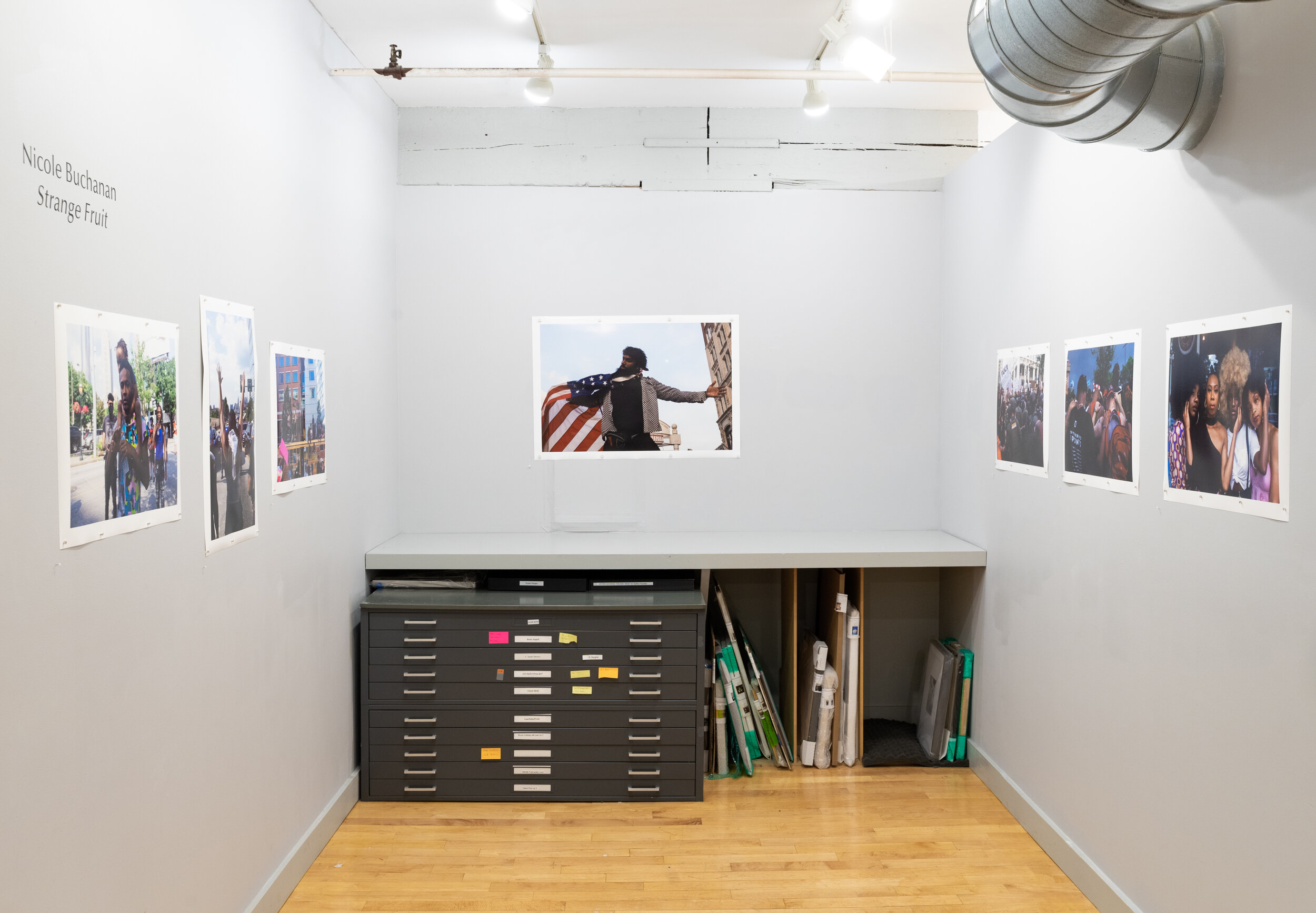

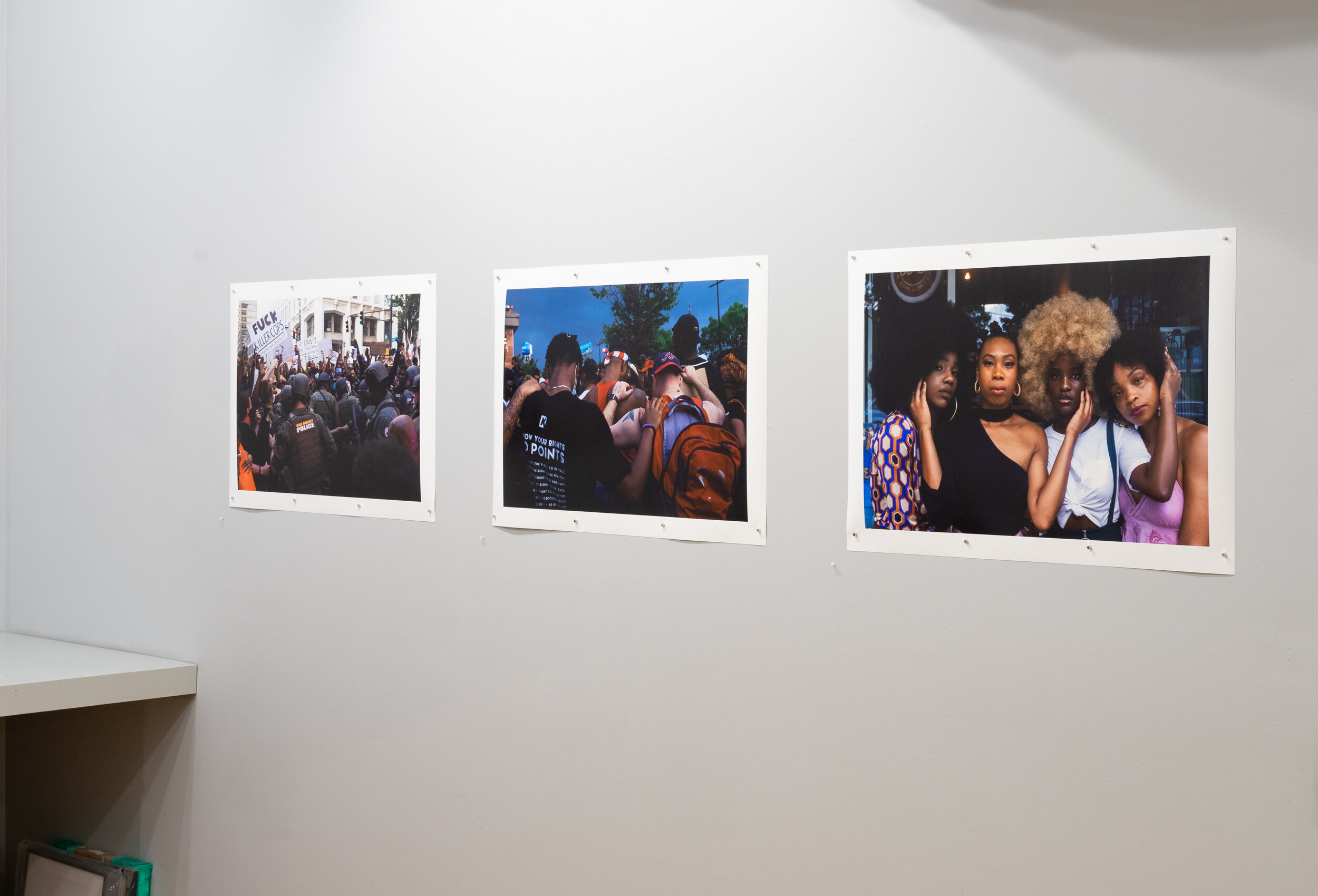

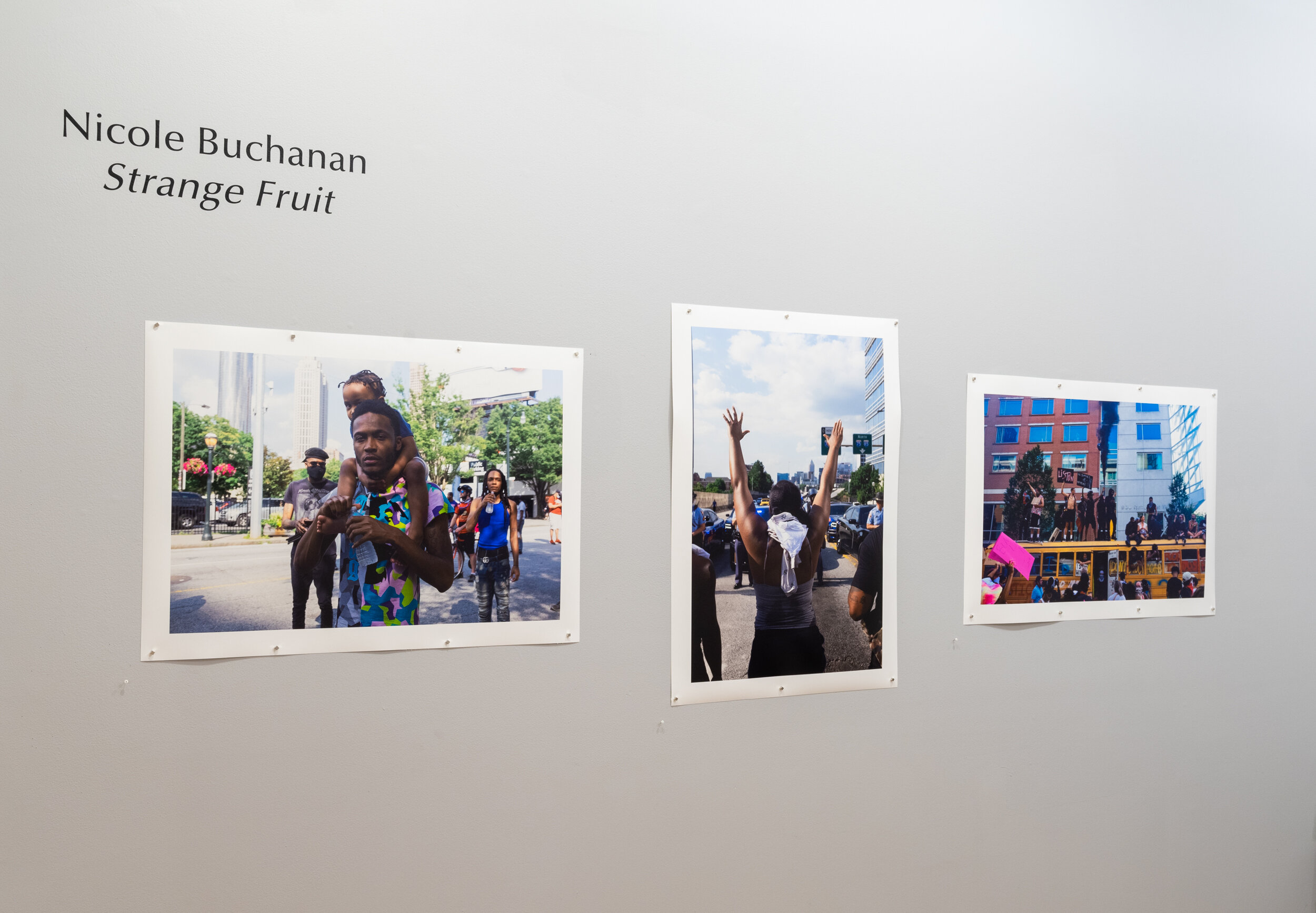
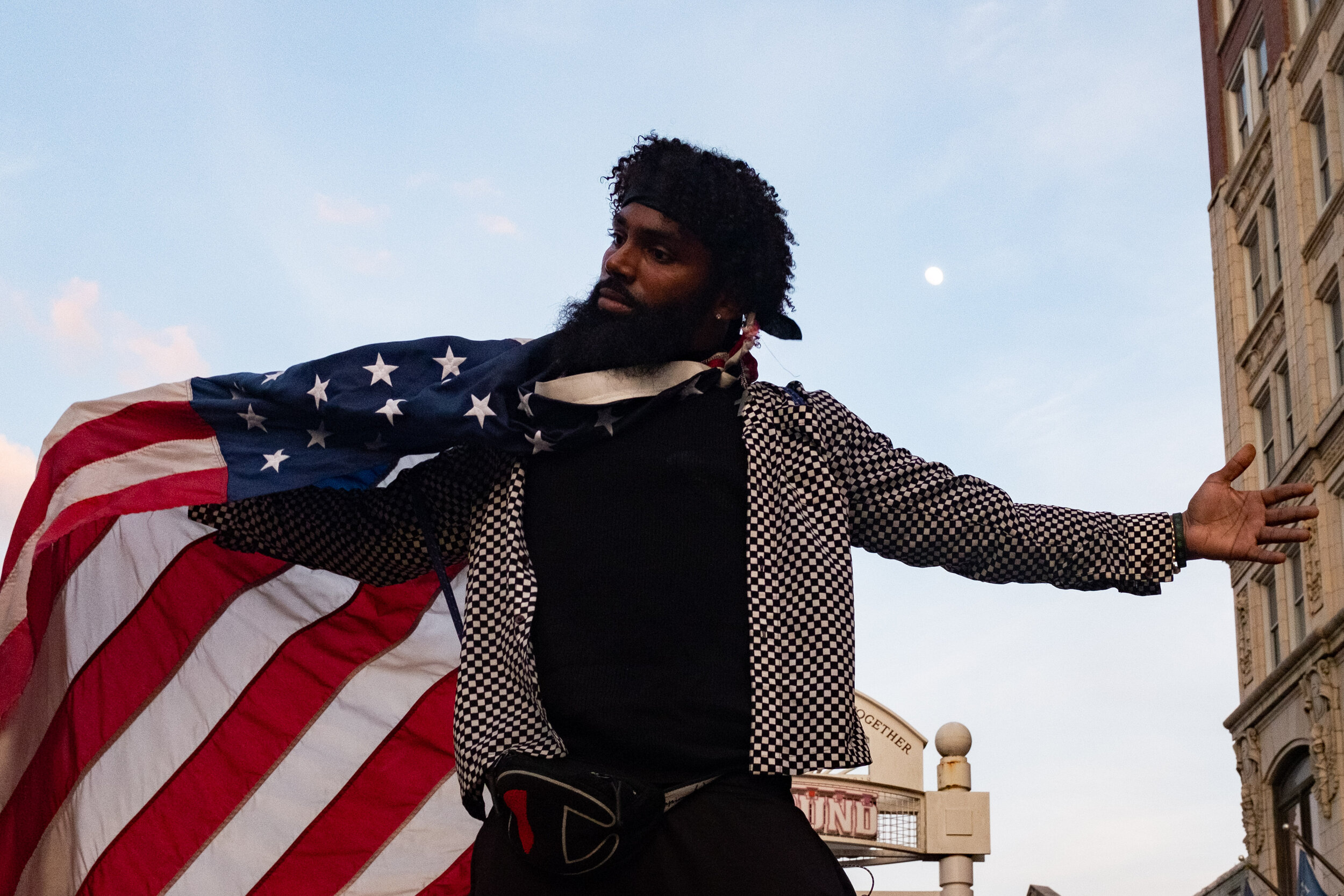
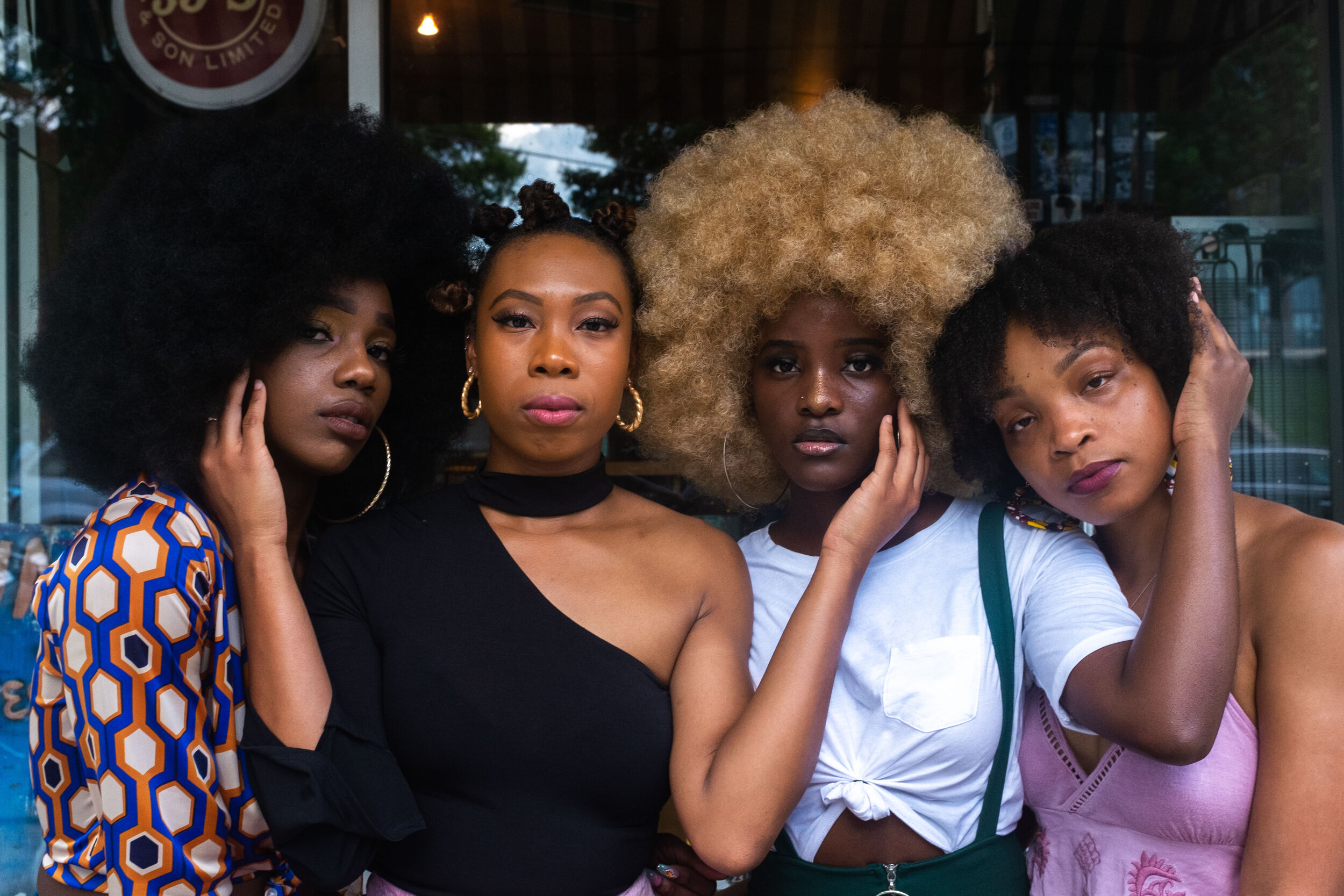
Alcove Gallery: Nicole Buchanan
Strange Fruit
Nicole Buchanan is a documentary photographer based in Atlanta, GA and a graduate of the Rhode Island School of Design where she received a BFA in photography. She utilizes her skills and experiences to explore innovative ways to invoke emotional insight into cultural and political events that shape our world. She believes that art can bring light to hot topics in a way that inspires real change in the world. She uses her photography as a weapon to influence, trick, and even change the minds of others.
This exhibit, Strange Fruit, is images made during the Atlanta protests in 2020. Not as an observer but as a participant, Nicole captures the energy and diversity of the crowd…children to older adults, multiple races…all together making their voices heard trying to bring about change.
